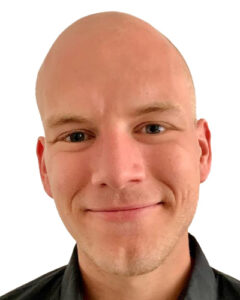As the Dartmouth Tuck community celebrated Asian American and Pacific Islander Heritage Month, two students reflected on their trek to Japan earlier this year. Read on for their experiences in this edition of Fridays from the Frontline,
Inside Student-Led Treks at Tuck: Exploring Old and New in Japan
T’24s Fiona Bowen and Charlie Jersey reflect on their time in Japan alongside 70 Tuck classmates. Five Japanese students led the trek to Tokyo, Kyoto, and Hiroshima.
Fiona Bowen T’24
 For this year’s spring break, a group of nearly 70 Tuckies embarked on a once-in-a-lifetime trek to Japan. With travel restrictions recently lifted, we resumed an annual Tuck tradition of eating, touring, and bullet-training our way through a beautiful country on the opposite side of the globe from Hanover.
For this year’s spring break, a group of nearly 70 Tuckies embarked on a once-in-a-lifetime trek to Japan. With travel restrictions recently lifted, we resumed an annual Tuck tradition of eating, touring, and bullet-training our way through a beautiful country on the opposite side of the globe from Hanover.
Our Japanese classmates were the best hosts and guides we could have asked for—huge thank you to Kakeru Tsubota T’23, Daiju Matsukura T’23, Yuka Sugimori T’24, Takuya Ogawa T’24, and Tetsuya Hokoyama T’24 for making the trip possible.
We started the trip in Tokyo, a city of 14 million people that somehow pairs urban hustle and bustle with pristine order and cleanliness. Single-file subway queues, spotless sidewalks, and the absence of honking horns set the city apart from any other I had visited. Our first day was jam-packed with a city tour, traditional drumming lessons, and a karaoke-infused dinner cruise. Later we broke into smaller groups to sample cat café subculture, track down iconic souffle pancakes, and shop for limited-release sneakers. All these activities were fueled by some of the best food I’ve ever eaten—a personal favorite was the ramen I ordered by vending machine at a tiny counter-serve spot.
The Japan trek was a unique opportunity to experience a new country and culture, while also bonding with my Tuck classmates. It was my first visit to Asia, and I felt so comfortable in the hands of our extremely capable hosts. With their guidance, we were able to seamlessly navigate the cities we visited and fully immerse ourselves in the food, language, history, and architecture. I came away from the trip with a new understanding and appreciation of Japanese culture and a deepened sense of connection to my classmates. On our last night in Tokyo, 20 alums joined us for a farewell dinner. As they shared stories of their own student-led treks and reminisced on their times in Hanover, I was reminded of the power of Tuck’s close-knit community even across international borders.
Fiona Bowen T’24 is from Summit, NJ. She graduated from Dartmouth College in 2018 with a major in Mechanical Engineering. Before Tuck, Fiona worked as a consultant at Bain & Company in New York City.

Charlie Jersey T’24
 Our second stop, Kyoto, offered up a stark contrast from the hyper-modern cityscape of Tokyo. Thin, twisting alleyways lined with izakayas were mixed with lantern-lit temples, as well as the wide streets required of a modern student city. Though the group tour brought fantastic tourist sites—trains through a monkey-laden valley, busy shrines literally covered in gold—the real highlights came when we split once again into smaller groups.
Our second stop, Kyoto, offered up a stark contrast from the hyper-modern cityscape of Tokyo. Thin, twisting alleyways lined with izakayas were mixed with lantern-lit temples, as well as the wide streets required of a modern student city. Though the group tour brought fantastic tourist sites—trains through a monkey-laden valley, busy shrines literally covered in gold—the real highlights came when we split once again into smaller groups.
One group of Tuckies, while trying on traditional kimonos, ended up on the local news (and the camera rolls of plenty of Japanese tourists). Another visited a local high school and became celebrities in their own right, though on a much smaller and more personal scale. As usual, calling the food merely a highlight does it a disservice—it spanned a wider range of experience than I had previously thought possible. One group indulged in crème brûlée doughnuts so tasty that someone asked about becoming a franchisee; as if to offer a direct counterpoint, the next day we sampled a traditional monastic lunch that was intentionally bland so as not to “arouse any passions.” Day trips to nearby locations like Osaka (sumo and whisky) and Nara Park (temples and bowing deer) capped our time in Japan’s ancient but buzzing former capital.
If Kyoto and Tokyo were opposite cities, Hiroshima was a third point on the triangle. We began by walking around the hypocenter of the atomic bomb site, which has since been restored as a monument to peace worldwide. The message of peace was hammered home by the nearby museum detailing the events of the explosion. What followed, therefore, felt like being reborn from the horrors into a kind of Eden: we breezed through Hiroshima’s beachy streets to a ferry, which shipped us past a cherry-red floating Torii gate to Miyajima Island*.
The island, designated one of Japan’s three most beautiful places by a 15th-century poet, lived up to its billing. Friendly deer nuzzled us as we peered through the floating Torii gate, sniffed our way towards stands selling deep-fried oysters, and hiked through lush woods up the 1500-foot mountain at the center of the island (getting plenty lost along the way).
If it were possible to be on a honeymoon with 70 business school students, this would be the place. After a day there, we took the Shinkansen (bullet train) back past Mount Fuji to Tokyo, where we split up to get in all sorts of trouble—between dipping ramen, katsudon, and fresh-off-the-boat sushi, we had more than enough energy to support all the walking we did through Tokyo’s incredibly diverse neighborhoods. A final send-off night featured traditional Kabuki performances from Japanese Tuck alumni and less-traditional karaoke performances from current Tuckies; Japan truly can’t stop mixing the old with the new.
Charlie Jersey T’24 is from Westport, CT. He graduated from Williams College in 2018 with majors in chemistry and German. Prior to matriculating at Tuck, he worked as a consultant at McKinsey and Company, specializing in sustainability and the energy transition.
*Of course, Jima means “island” in Japanese, so saying Miyajima Island is a bit like saying Chai tea.





